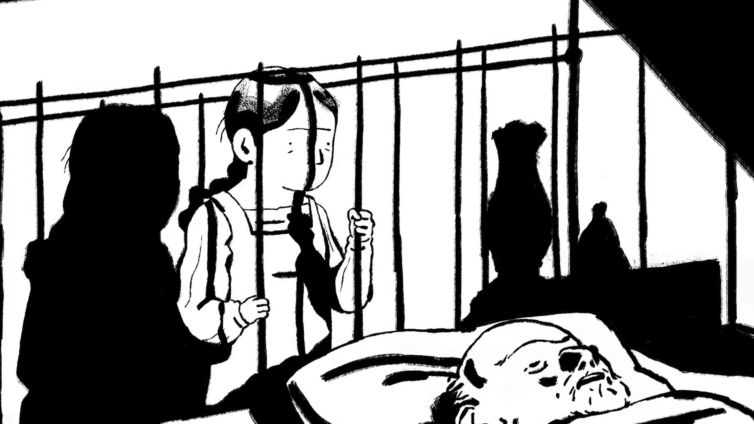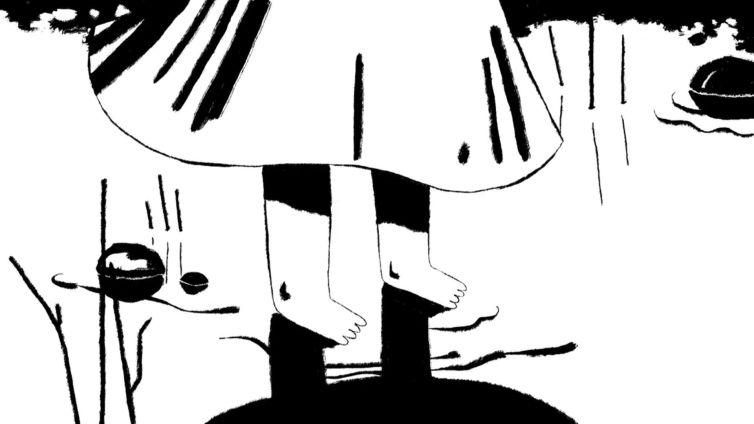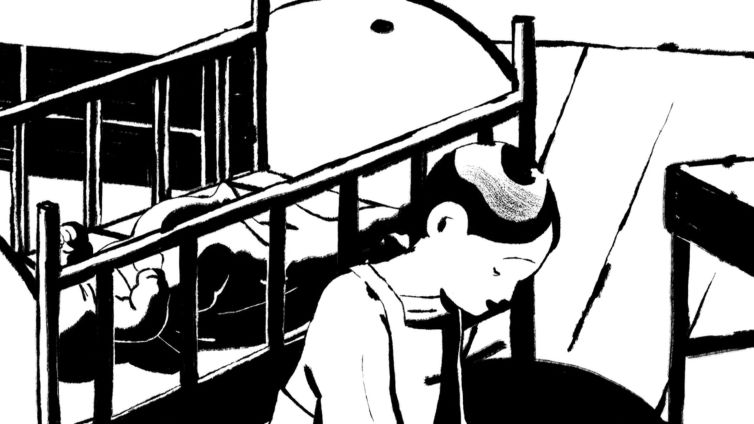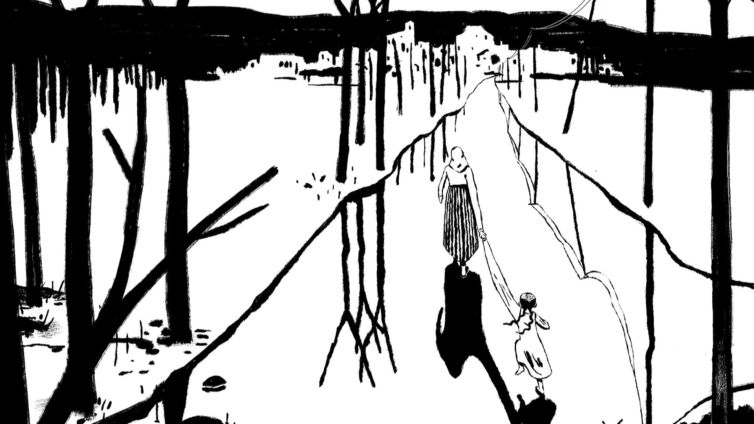“Sonolenta” is a film about reality and as such it will be elusive and multiple. It is constructed only in black and white to better mix the different dimensions of narrative reality, which in the film are between the deepest drowsiness and maximum wakefulness. The technique that will bring the characters and cinematic moments to life will be Indian ink drawing, based on traditional animation.
Since it was decided not to create a graphic border, it will be up to the viewer to decide when they are faced with a dreamlike tale or, on the other hand, they are in the presence of the awakened characters, in a real-life scene.
Although it is visually homogeneous, in the film the moments that describe the dream will be more flexible in the way they (re)construct the characters’ reality through animation. There are times when a head falls and becomes detached from the neck; others in which the characters appear to be made of rubber and their bodies stretch in an unrealistic way, still others in which an interior space, such as a room, is confused with an exterior space. In these moments – when we find ourselves inside the dream and/or are overcome by the protagonist’s fatigue – the intention is to subvert conventions.
While I was thinking about the cinematographic possibilities of this narrative, about the different ways of adapting it to the moving image, some works occurred to me that constitute, for me, important references. The animated films of William Kentridge and Gianluigi Toccafondo are due to the way in which, in the first case, the images leave a trace of past actions and, in the second, the elasticity and plasticity that characterize the bodies of the characters, actions and objects. The animation processes used by these authors – the echo or visual trail and distortion – will also be part of “Sonolenta” whenever the actions require it.
The actions will be reinforced by the use of realistic sound design (wakefulness), non-realistic sound design (dream) and a minimal musical soundtrack (in the sense that it will not be present throughout the film but at specific moments).
As the film’s title suggests, the music will be inspired by lullabies or “lullabys”. Since there is no concern about associating the film with a particular nationality, especially because it is not intended to be a portrait of any era or nation, this song must have a universal character,
The music will be composed of a main theme based on a lullaby and will incorporate, through the use of the same instruments and musical phrases, the musical sounds that appear during the film. This will have the function of creating an increasingly saturated emotional and narrative environment (in crescendo), translating the protagonist’s increasingly heavy sleep. It culminates in an abrupt silence and later the melody resumes, albeit with a calmer and more relaxing tone, after the high point of the narrative or its ending.
The music will guide the intensity of the scenes represented, being absolutely fundamental for reading the protagonist’s emotions, sometimes suggesting tension and coldness, sometimes showing tranquility and well-being. Dialogues will be used punctually and in order to clarify the action(s).
Animated cinema, like no other, allows us this extraordinary dexterity of gesture/sound/rhythm, from the evocation of memory to its transformation into confabulation, repeated a thousand times.
Images and sounds advance upon us, spill over and then disappear, leaving a ballast.










